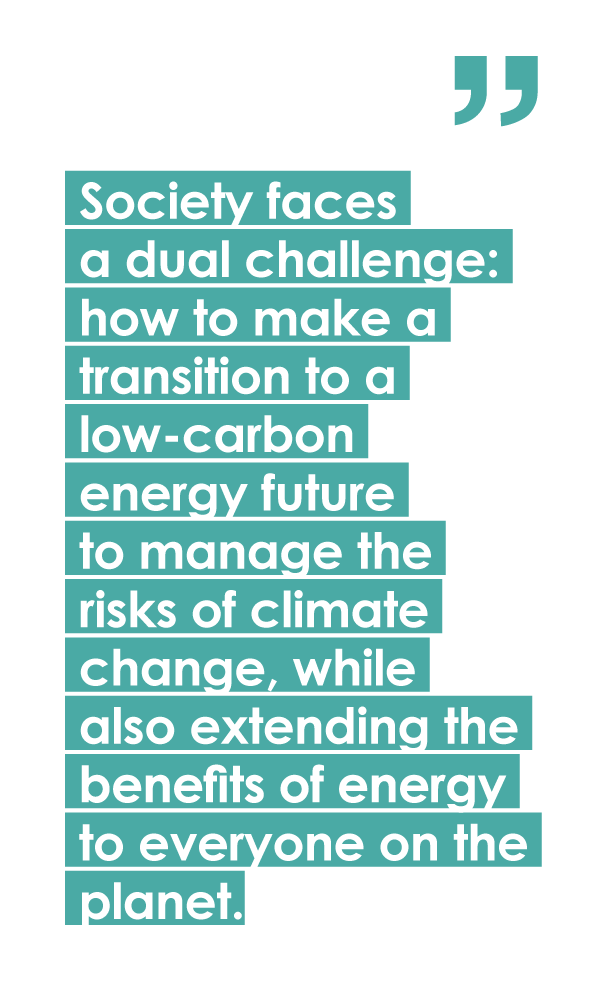Energy lights, heats and cools homes and businesses. It transports and connects people and goods. It is used in industrial processes that create steel and cement for the world’s infrastructure.
Energy use goes hand-in-hand with economic activity. It enables opportunities for a growing population seeking to improve their quality of life. But society faces a dual challenge: how to make a transition to a low-carbon energy future to manage the risks of climate change, while also extending the benefits of energy to everyone on the planet. This is a challenge that requires changes in the way energy is produced, used and made accessible to more people while drastically cutting emissions.
This transition is under way. It will move at different paces and produce different outcomes in different countries depending on local factors such as available natural resources and weather patterns, national policies that address climate change and local air quality, economic growth and which technologies and products companies and consumers choose. Unexpected events, such as the COVID-19 pandemic, may create additional challenges or provide opportunities to accelerate progress.
Fundamental changes need to happen across the global economy, especially in power, transport, buildings and industry – four major areas where energy is consumed and that produce significant energy-related carbon dioxide (CO2) emissions.
Increasing use of renewable sources of energy is essential to reducing emissions. But they chiefly produce electricity, which today meets just under 20% of total energy for end use. For renewables to have a bigger impact, the use of electricity will need to be extended to a larger range of activities.
The move to using electricity generated by low-carbon and renewable sources will be relatively straightforward for some sectors of the economy, such as the manufacture of clothes and food. These require low-temperature processes and mechanical activities, which electricity is well suited to deliver.
Other sectors, such as industries that produce iron, steel, cement, plastic and chemicals and certain types of transport, currently rely on the unique ability of hydrocarbons like oil, natural gas and coal to provide extremely high temperatures, chemical reactions or dense energy storage. As of today, many of these cannot be electrified at all, or only at a prohibitively high cost.
The global energy transition, therefore, will span decades and require unprecedented collaboration between policymakers, leaders from business and non-governmental organizations, and consumers.

To accelerate change, governments need to introduce long-term policies that reshape the main sectors of the economy, as well as enable the development of lower-carbon and renewable sources of energy supported by transformative technologies, such as carbon capture and storage (CCS).
A significant contribution to the energy transition could be done right now via growing role of natural gas in transport, heating and lighting homes, and in power industries. Natural gas emits between 45% and 55% lower greenhouse gas emissions than coal when used to generate electricity, according to data from the International Energy Agency (IEA), and less than one-tenth of the air pollutants.
It is expected, that energy companies producing gas will also at the same time continue to produce oil and its related products in a responsible way to meet the needs and demand of its customers, today and in the foreseeable future. Many parts of society are seeking to reach net-zero emissions by 2050. We as Shell have an ambition to keep in step with that action and it aims to be a net-zero emissions energy business by 2050, or sooner, in step with society.
Jarmila Gurská, Country Chair Representative SHELL Slovakia, s.r.o.



Follow us